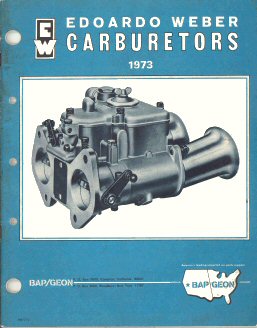number
per carb
40 IDA 3C
vintage
40 IDA 3C
2006
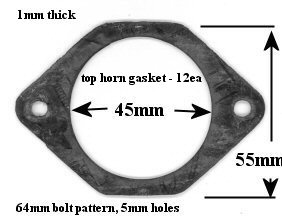
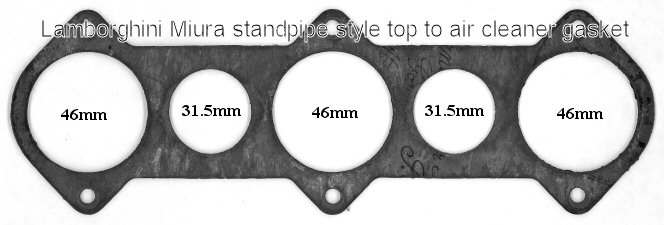


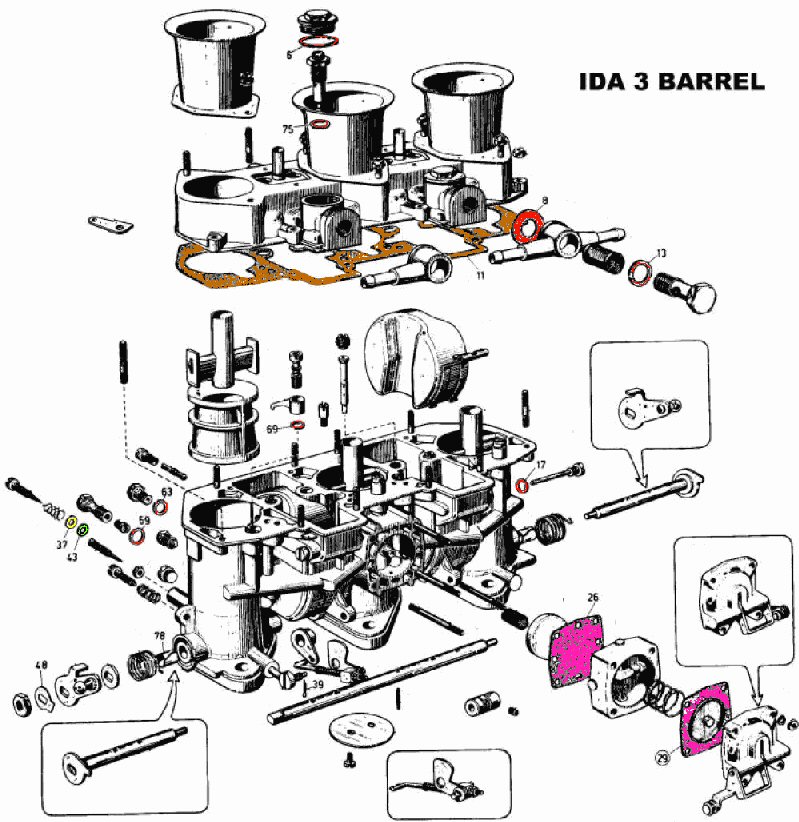
| Porsche |
cyl |
size |
Weber |
choke |
sec |
main |
idle |
air |
emul |
air |
jet |
bleed |
needle |
notes |
| 904GTS |
4 |
1956 |
46 IDA 2/3 |
40 |
4.50 |
1.70 |
0.60F10 |
- |
F14 |
1.30 |
0.50 |
0 |
3.00 |
|
| 911L |
6 |
1991 |
40 IDA 3C/1 |
30 |
4.50 | 1.25 |
0.55 |
1.10 |
F26 |
1.80 |
0.50 | 0 |
1.75 |
|
| 911USA |
6 |
1991 |
40 IDAP 3C/1 |
30 |
4.50 | 1.25 |
0.52 |
1.10 |
F26 |
1.80 |
0.50 | 0 |
1.75 |
|
| 911S |
6 |
1991 |
40 IDS 3C/1 |
32 |
4.50 | 1.30 |
0.55 |
1.10 |
F3 |
1.80 |
0.50 | 0 |
1.75 |
|
| 911T |
6 |
1991 |
40 IDT 3C/1 |
27 |
4.50 | 1.10 |
0.50 |
1.10 |
F2 |
1.85 |
0.50 | 0 |
1.75 |
|
| 911T |
6 |
1991 |
40 IDTP 3C/1 |
27 |
4.50 | 1.10 |
0.45 |
1.45 |
F1 |
1.85 |
0.50 | 0 |
1.75 |
|
| Carrera 6 |
6 |
1991 |
46 IDA 3C/1 |
42 |
4.50 | 1.70 |
0.70 |
0.80 |
F24 |
1.45 |
0.50 | .40 |
1.75 |
|
| 914/6 |
6 |
1991 |
40 IDTP 13C/1 |
27 |
4.50 | 1.05 |
0.50 |
1.45 |
F1 |
1.70 |
0.50 | 0 |
1.75 |
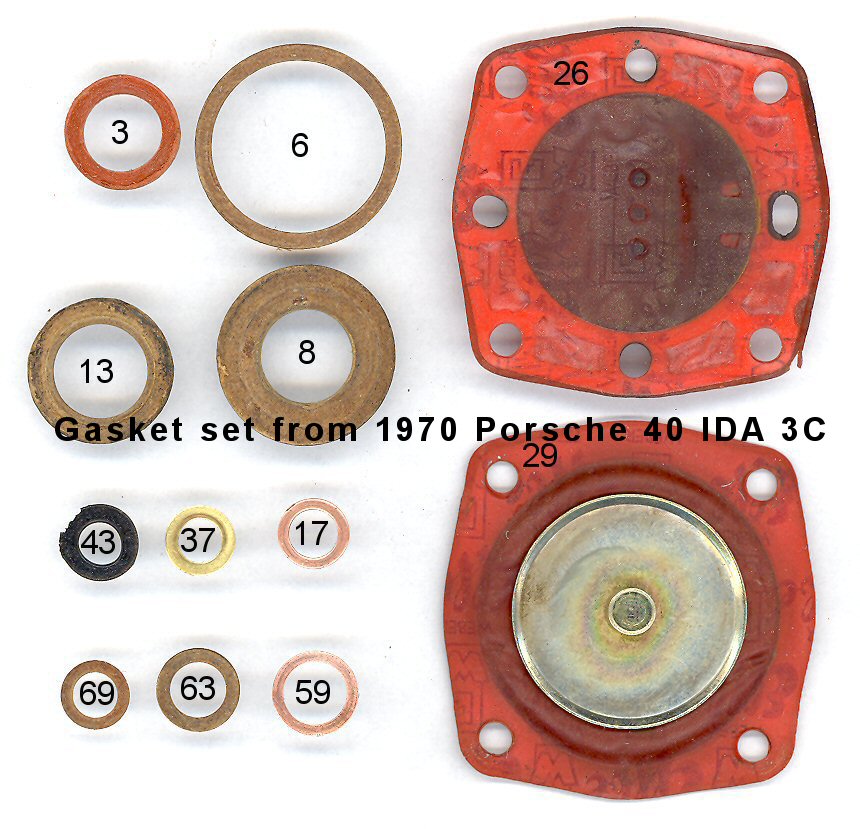
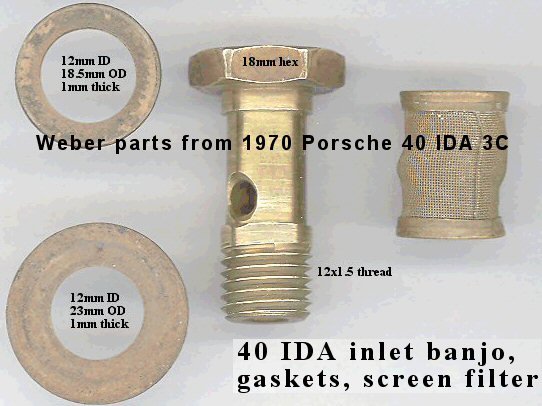
| diagram number |
Quantity per carb |
Description 40 IDA |
Weber no. 40 IDA 3C vintage |
material |
finish |
Weber no. 40 IDA 3C 2006 |
graphics click big | notes from vintage pieces dimensions usually metric, mm |
ref |
| 37 |
3 |
washer, needle oring seal |
55510.018 |
brass |
nat |
55510.018 |
5.5 x 9.0 x 0.50 |
replaced with cup style? |
|
| 43 |
3 |
Oring |
41565.002 |
rubber |
black |
41565.002 |
table | AS568A# - 008 = 4.47id x 1.78thick |
|
| 53A |
3 |
spring, idle mix screw |
47600.060 |
steel |
yZ |
47600.060 |
L=14mm, wire=1.0mm, coils=5.75 |
||
| 62 |
3 |
needle, screw idle mix |
64750.004 |
steel |
yZ |
64750.004 |
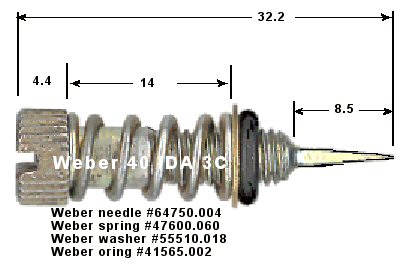 | see graphics |
|
| 65 |
3 |
jet, idle |
brass |
nat |
74403. |
 |
|||
| 66 |
3 |
jet holder |
brass |
nat |
52570.005 |
 |
|||
